Lightning is fascinating to watch but, also extremely dangerous. In the United States, there are about 25 million lightning flashes every year. Each of those 25 million flashes is a potential killer. While lightning fatalities have decreased over the past 30 years, lightning continues to be one of the top weather killers in the United States. In addition, lightning injures many more people than it kills and leaves some victims with life-long health problems.
Understanding the dangers of lightning is important so that you can get to a safe place when thunderstorms threaten. If you hear thunder—even a distant rumble—you are already in danger of becoming a lightning victim.
How Thunderstorms Develop
All thunderstorms go through stages of growth, development, electrification and dissipation. Thunderstorms often begin to develop early in the day when the sun heats the air near the ground and pockets of warmer air start to rise in the atmosphere. When these pockets of air reach a certain level in the atmosphere, cumulus clouds start to form. Continued heating causes these clouds to grow vertically into the atmosphere. These "towering cumulus" clouds may be one of the first signs of a developing thunderstorm. The final stage of development occurs as the top of the cloud becomes anvil-shaped.
As a thunderstorm cloud grows, precipitation forms within the cloud. A well-developed thunderstorm cloud contains mostly small ice crystals in the upper levels of the cloud, a mixture of small ice crystals and small hail in the middle levels of the cloud, and a mixture of rain and melting hail in the lower levels of the cloud. Air movements and collisions between the various types of precipitation in the middle of the cloud cause the precipitation particles to become charged. The lighter ice crystals become positively charged and are carried upward into the upper part of the storm by rising air.
The heavier hail becomes negatively charged and is either suspended by the rising air or falls toward the lower part of the storm. These collisions and air movements cause the top of the thunderstorm cloud to become positively charged and the middle and lower part of the storm to become negatively charged.
In addition, a small positive charge develops near the bottom of the thunderstorm cloud. The negative charge in the middle of thunderstorm cloud causes the ground underneath to become positively charged, and the positively charged anvil causes the ground under the anvil to become negatively charged.
How Lightning Forms
Lightning is a giant spark of electricity in the atmosphere or between the atmosphere and the ground. In the initial stages of development, air acts as an insulator between the positive and negative charges in the cloud and between the cloud and the ground; however, when the differences in charges becomes too great, this insulating capacity of the air breaks down and there is a rapid discharge of electricity that we know as lightning.
Lightning can occur between opposite charges within the thunderstorm cloud (Intra Cloud Lightning) or between opposite charges in the cloud and on the ground (Cloud-To-Ground Lightning). Cloud-to-ground lightning is divided two different types of flashes depending on the charge in the cloud where the lightning originates.
If additional negative charge is immediately available in the cloud in the vicinity of the initial return stroke, the additional charge may start to move toward ground in the conductive path left by the initial return stroke. These subsequent leaders are called dart leaders. Because the channel is already established, the charge can move down the main channel in a much smoother manner than the stepped leader, and at a much greater speed (Figure 1). Like the stepped leader, another return stroke will occur when they reach the ground. Because dart leaders just follows the main discharge channel, subsequent return strokes are not usually branched.
Typically, a negative flash of lightning will be comprised of an initial stepped leader/return stroke followed by 2 or 3 subsequent dart leaders/return strokes. Multiple return strokes will cause the lightning to flicker. While not all negative flashes have more than one return stroke, some negative flashes have been observed with more than a dozen return strokes.
Figure 2 shows the various components of a lightning flash including the stepped leader, positive streamers, the return stroke, and three dart leaders/return stokes.
All of this happens in a fraction of a second (Figure 3) and cannot be discerned by the human eye which is overwhelmed by the bright return stroke.


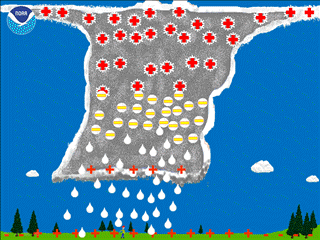
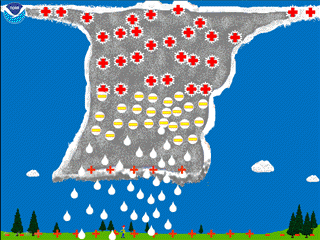
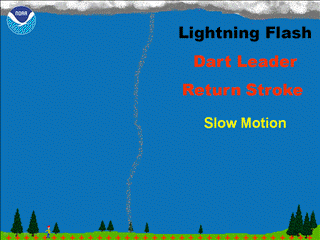
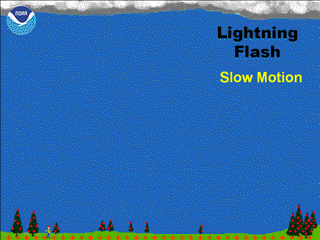
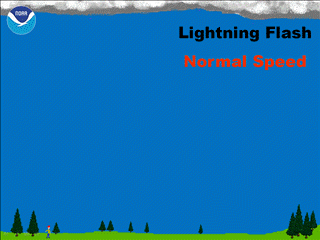
What happens when a structure is struck by lightning?
A lightning strike to an unprotected structure can be catastrophic. Packing up to 100 million volts of electricity and a force comparable to that of a small nuclear reactor, lightning has the power to rip through roofs, explode walls of brick and concrete and ignite deadly fires. In addition to structural damage, lightning effects are not just limited to the physical structures they hit. Inside, organizations experience the following financial, safety and operational impacts from direct lightning strikes:
- Poor customer satisfaction resulting from phone and computer outages
- Lost paid wages to idle, interrupted staff
- Lost revenues each hour of downtime
- Lost revenues and poor service records from utility power outages
- Costly property damage, draining capital and/or jeopardizing insurance coverage
- Failure of mission critical systems from damaged sensitive electronics
- Costly supply chain disruptions from downed and damaged automation systems
- Most important risk of injury or loss of life

